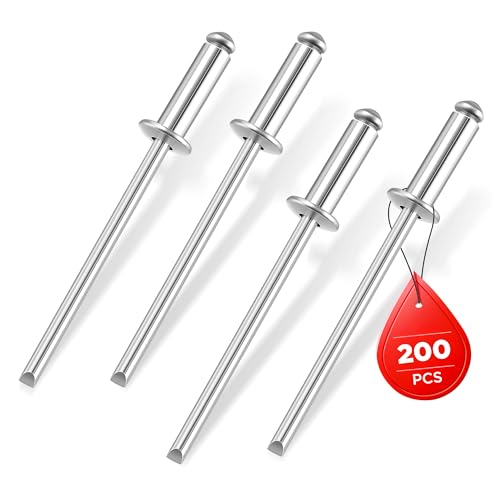Alright, I finally have some results for you. I assumed 6061-T6 aluminum. I'm not sure what specific alloys people commonly use for home boat mods based on pricing and availability so I just went with the aerospace standard. However, it doesn't make a ton of difference. The 2000 through 7000 series alloys all have virtually the same stiffnesses which is what drives deflection. They do have different strengths and 6061 is actually one of the weaker ones we commonly use, but it is still plenty strong for this type of application.
For the model, I created a simply supported plate model that was 54" x 12" based on your dimensions. The 54" edges were simply supported (essentially models them as just resting on your angles and assumes angles are super stiff or "rock solid"). The 12" edges were left free. I wasn't really sure what the best load to apply was but went for a totally unrealistic point load of 300 lb at the very center. Then tried it with a 300 lb load at the center but distributed evenly over a 4" x 4" section. I ran this configuration with both 0.090" and 0.125" sheet thickness.
I then added some bow to stern running supports/stringers. I added three rows evenly spaced at 13.5". I applied the same loads as above but this time at the mid-point between the center stringer and the next one over. I ran it it with both thicknesses.
So, for some numbers...
For the first configuration without the stringers I got deflections of: 1.10" for the point load and 0.97" for the distributed load at 0.090" thick; and 0.41" for the point load and 0.36" for the distributed load at 0.125" thick.
For the configuration with stringers: 0.69" for the point load and 0.58" for the distributed load at 0.090" thick; and 0.26" for the point load and 0.21" for the distributed load at 0.125" thick.
The thing I failed to do was apply a load between the edge and the first stringer for configuration two as that would be critical since it loses some support there since I left the sides free. I know it will be a little worse than what I got.
It's kind of hard for me to make any kind of recommendation based on these results since I am not really familiar with how supportive the foam you plan on adding will be. It has the potential to help a lot. However, assuming the foam does provide somewhat significant support, I would think adding in 3 or 4 rows of stringers down the center and one down each side near the edge and using a 0.090" sheet would be more than fine. By the same token, going without stringers and using 0.125" over foam will probably be comparable. Keep in mind 0.125" AL weighs about 40% more than 0.090" so weight may be a wash either way.























































